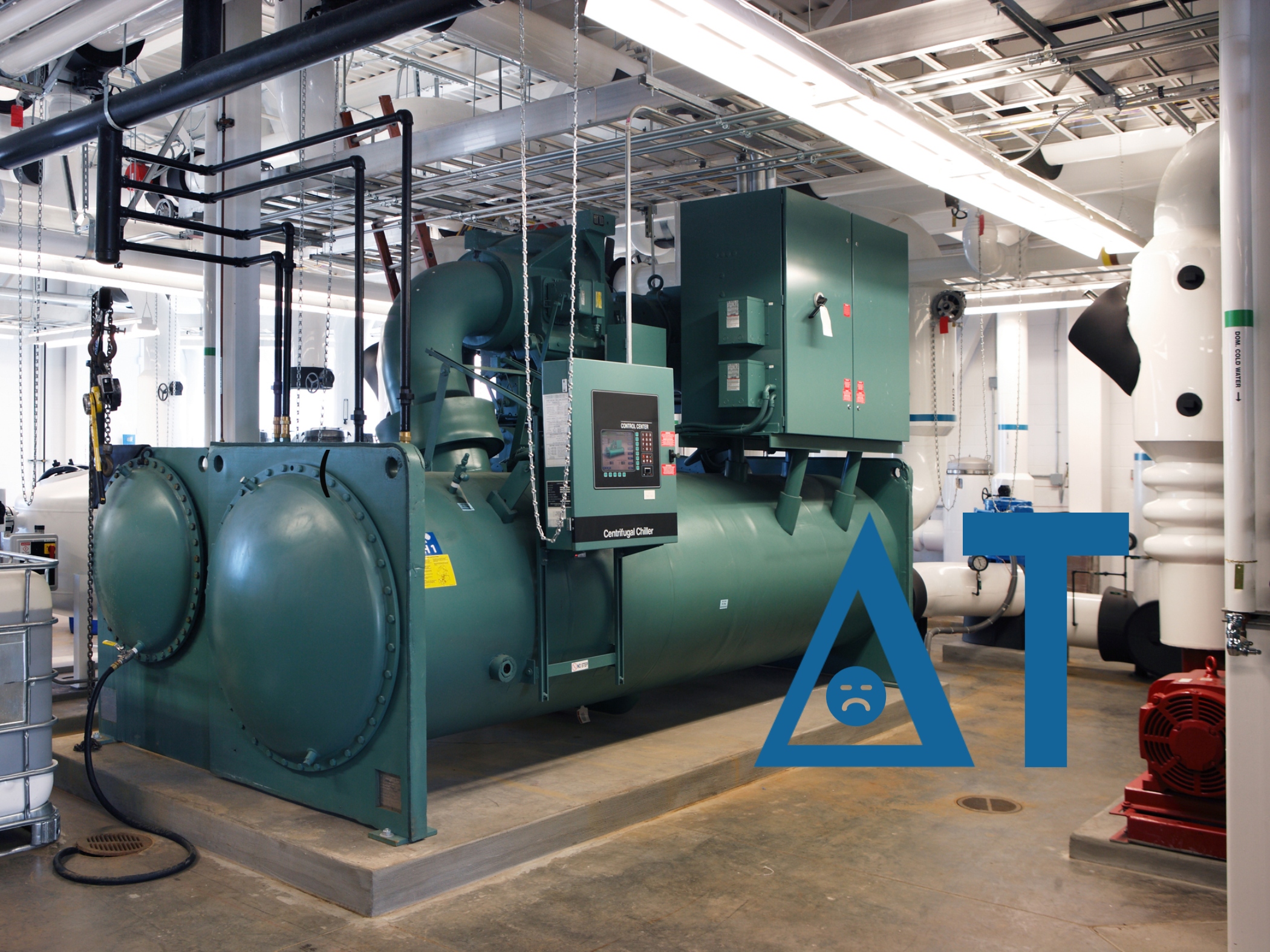Are Your Chillers Suffering From Low Delta T Syndrome?

Chillers are widely used in commercial and industrial facilities, primarily for air conditioning, refrigeration and process cooling applications. These units use a large amount of energy, however, and they present a significant opportunity for savings. Low delta T (?T) is a common cause of chiller inefficiency. Here, we'll explain what delta T means for your chiller system and how you can optimize it to save energy.
What is delta T?
A chiller cools return water after it has circulated through the building or process. This water is typically warmer because it has picked up heat from the environment or equipment it was cooling. The chiller then removes this heat from the return water, cooling it down before it is recirculated back as chilled supply water to the building or process, repeating the cycle.
Delta T is the difference between the return water temperature and the supply water temperature. A higher delta T indicates that the chiller effectively removes heat from the water, which generally means the system operates efficiently. So, the formula for calculating delta T is simple:
Delta T = Return Water Temperature - Supply Water Temperature
Monitoring delta T helps in optimizing chiller performance, ensuring that it meets cooling demands while minimizing energy use.
How to optimize delta T
Maintaining optimal delta T is critical to enhancing chiller efficiency. Here are some strategies you can use to optimize delta T and overall chiller performance.
- Adjust water flow rates. Ensure the chilled water flow rate is appropriate for the system's design. Too high a flow rate can reduce delta T, while too low a flow rate can reduce cooling system performance.
- Implement speed control. Install variable frequency drives on motors driving pumps and fans to adjust flow rates automatically based on real-time cooling demands, which can help maintain an optimal delta T and save energy.
- Make use of data. Continuously monitor and analyze delta T and other performance measures using data from building automation systems to identify trends and make informed adjustments to optimize efficiency for different load conditions.
- Balance the load. Ensure proper distribution of chilled water throughout the system. For example, properly balancing the air conditioning load to all areas will help ensure uniform comfort while improving chiller efficiency.
- Preventive maintenance. Perform regular preventive maintenance on the chiller and associated components, such as cleaning heat exchangers and checking for leaks, to ensure optimal heat transfer and overall system performance.
By implementing these measures, you can reduce your operating costs and improve overall cooling system performance.
We offer rebates for energy-saving upgrades and all kinds of smart energy tips specifically for businesses. Visit ElectricIdeas.com/Work for more info.
Return to newsletter